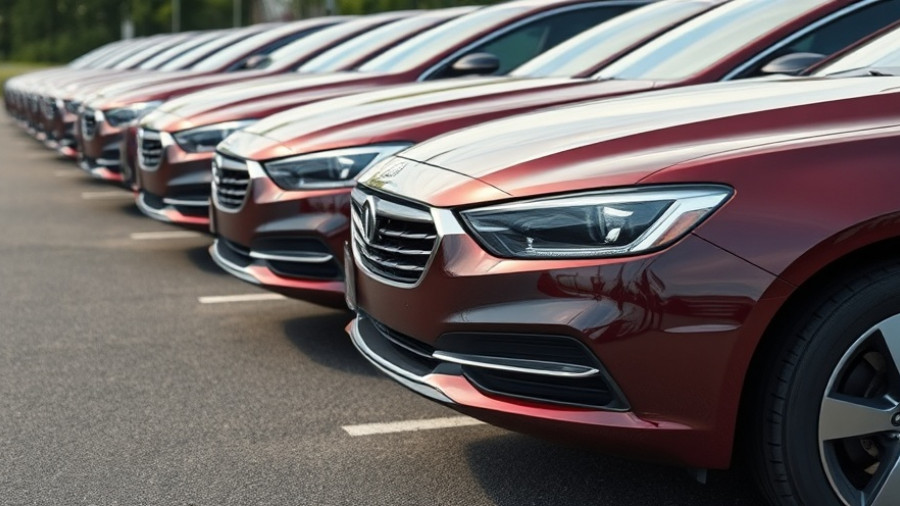
Car Prices Hitting Unprecedented Heights: Understanding the Surge
The automotive industry is in a state of flux as the average cost of a new car surpasses the $50,000 mark, according to a recent Kelley Blue Book report. The average transaction price (ATP) for new vehicles reached $50,080 in September — the highest on record. This milestone reflects a broader trend in the industry influenced by inflation, changing consumer preferences, and the types of vehicles being sold.
Inflation: The Unfortunate Constant
Inflation has become a constant backdrop in the economic landscape, causing consumer prices to rise sharply across several sectors, including the automotive industry. Since mid-2021, the U.S. has faced the most severe inflationary pressures since the 1980s. As discussed in a New York Times article, these price challenges persist, significantly impacting buyers' budgets and spending habits.
The Shifting Demand Landscape: Who is Buying?
Interestingly, consumer behavior is shifting towards higher-end vehicles and electric options, contributing to the rising average cost per car. As Erin Keating points out, wealthier households with access to capital are now dominating the market, partially due to budget-conscious buyers migrating to the used car market. This shift has skewed sales results, driving up the prices of new cars. For instance, electric vehicles (EVs), although not categorized strictly as luxury, come with an ATP of $58,124, which substantially increases overall averages.
Market Trends: Evolving Consumer Choices
With the recent economic climate, there is an interesting trend: budget-conscious consumers are opting for used cars instead of mid-tier new options. The Kelley Blue Book notes that car buyers have been feeling the pinch of rising prices, prompting many to avoid new models in favor of more affordable alternatives. This change in demand helps explain why many automakers are prioritizing higher-end models that yield greater profits.
The Role of Supply Chain Challenges and Production Focus
Various supply chain disruptions stemming from the pandemic have also led to production slowdowns. As mentioned in another Capital One article, restrictions on essential parts delayed vehicle production, further contributing to a decrease in available inventory. Automakers have responded by focusing on producing fewer, more profitable luxury models instead of a varied lineup to meet diverse consumer demand.
Possible Future Trends: What Lies Ahead?
While current trends paint a challenging picture for car buyers, there are signs of potential stabilization. Economists predict that inflation may ease in 2024, leading to improved affordability in various sectors, including the automotive industry. However, prices for car insurance and repair services are expected to continue climbing, indicating that the overall cost of vehicle ownership may remain high for the foreseeable future.
Conclusion: The Road Ahead for Consumers
The rise in average new car costs to above $50,000 is a reflection of more than just economic challenges; it underscores shifting consumer habits and industry adaptations post-pandemic. For potential car buyers, understanding these trends is crucial as they navigate a landscape where decisions regarding new versus used cars will significantly impact their financial health. As consumers prepare for ongoing fluctuations, early awareness and strategic planning could make a significant difference in their vehicle purchasing journey.
 Add Row
Add Row  Add
Add 




Write A Comment